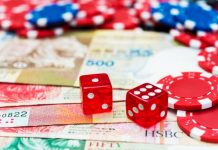Gold continues to lose ground this week, and has lost close to 1 percent on Tuesday. In the North American session, the price for one ounce of spot gold is $1217.38, its lowest level since March 15. There are no major releases in the US on the schedule. There was more good news on the employment front, as JOLTS Jobs Openings remained unchanged at 5.74 million, above the estimate of 5.67 million.
Gold prices have dropped sharply in May, sliding 4.2 percent. The metal lost ground last week following the Federal Reserve rate statement, which was more hawkish than expected. Although the US economy had some hiccups in the first quarter, Fed policymakers chose to focus on the positive, and this immediately increased the likelihood of a June rate hike. This triggered a negative reaction from gold, which trades inversely to interest rate moves. The odds of a June hike have moved even higher this week, following strong US employment numbers in April. Nonfarm Payrolls improved to 211 thousand, easily beating the forecast of 194 thousand. The unemployment rate fell to an impressive 4.4%, compared to the estimate of 4.6%. This was the lowest rate since May 2007. Wage growth remained weak at 0.3%, but still matched the forecast. Still, with such little slack in the labor markets, we should see wage growth start to move higher. If that happens sooner rather than later, the Fed could raise rates three more times in 2017. As things stand now, two more moves is the likely scenario. Currently, the likelihood of a rate hike stands at 87%, according to the CME Group, and that figure could continue to rise.
Election campaigns often lead to volatility in gold prices, due to market uncertainty about the outcome. However, that was not the case in the French presidential election, as there were no real surprises in the outcome, save for the fact that Emmanuel Macron’s margin of victory for was larger than expected. Throughout the second round of the election campaign, opinion polls showed Macron with a comfortable 20-point edge, and in the end, he beat expectations, beating Marie Le Pen by a margin of 64% to 36%. Although Macron certainly "won big", it should be noted that fully one third of French voters either abstained or voted a blank ballot as a protest vote. This means that Macron was viewed by many voters as a default choice, as he was seen as more palatable than Le Pen, head of the extremist right-wing party National Front. The markets won’t have much time to dwell on this election, with parliamentary elections slated for mid-June. Macron’s En Marche! party is barely a year old and is unlikely to win a majority, which would mean a power-sharing setup in parliament, likely between Macron’s party and the center-right. One important factor in the presidential election was that in both rounds, opinion polls were surprisingly accurate – the concern that many voters would vote Le Pen but wouldn’t admit it to the pollsters did not occur. (In the US election, a sizeable numbers of Trump voters were embarrassed to admit so before the vote, thus skewing opinion polls in favor of Hillary Clinton.) Similar to the presidential election, opinion polls during the election campaign will be important as fundamental releases and should be treated as market-movers.













